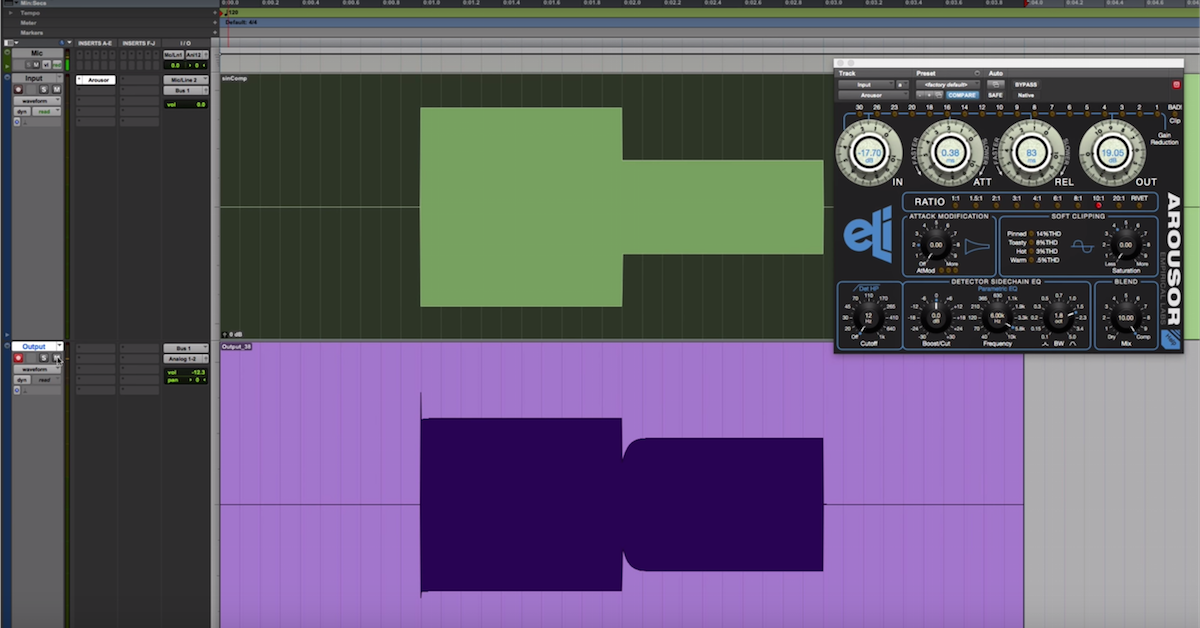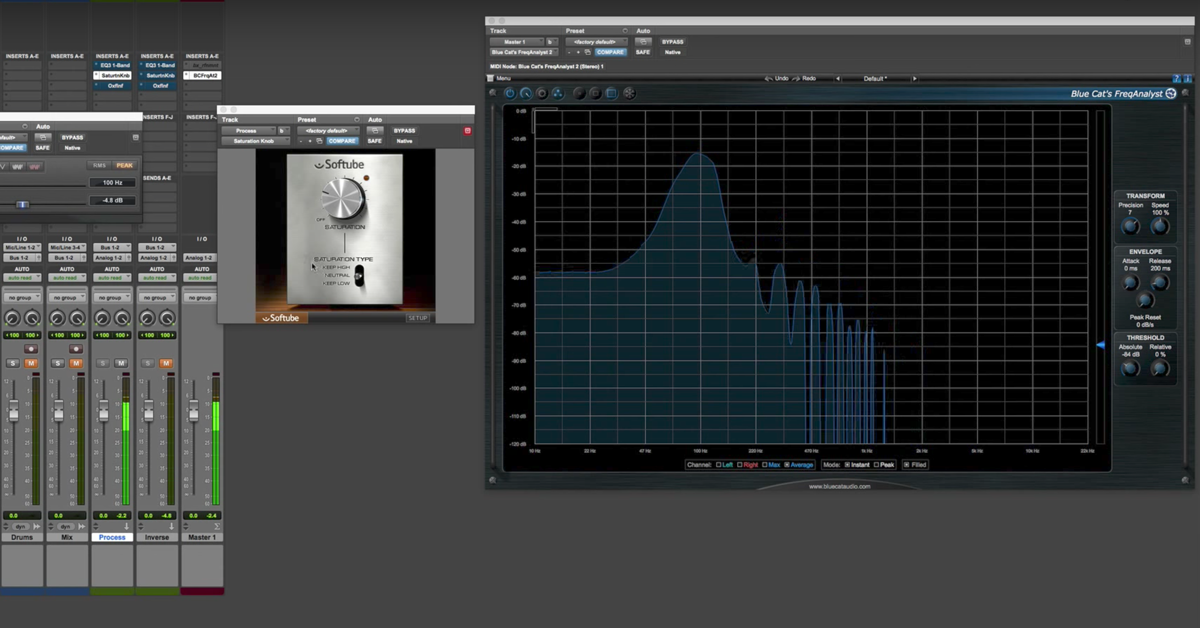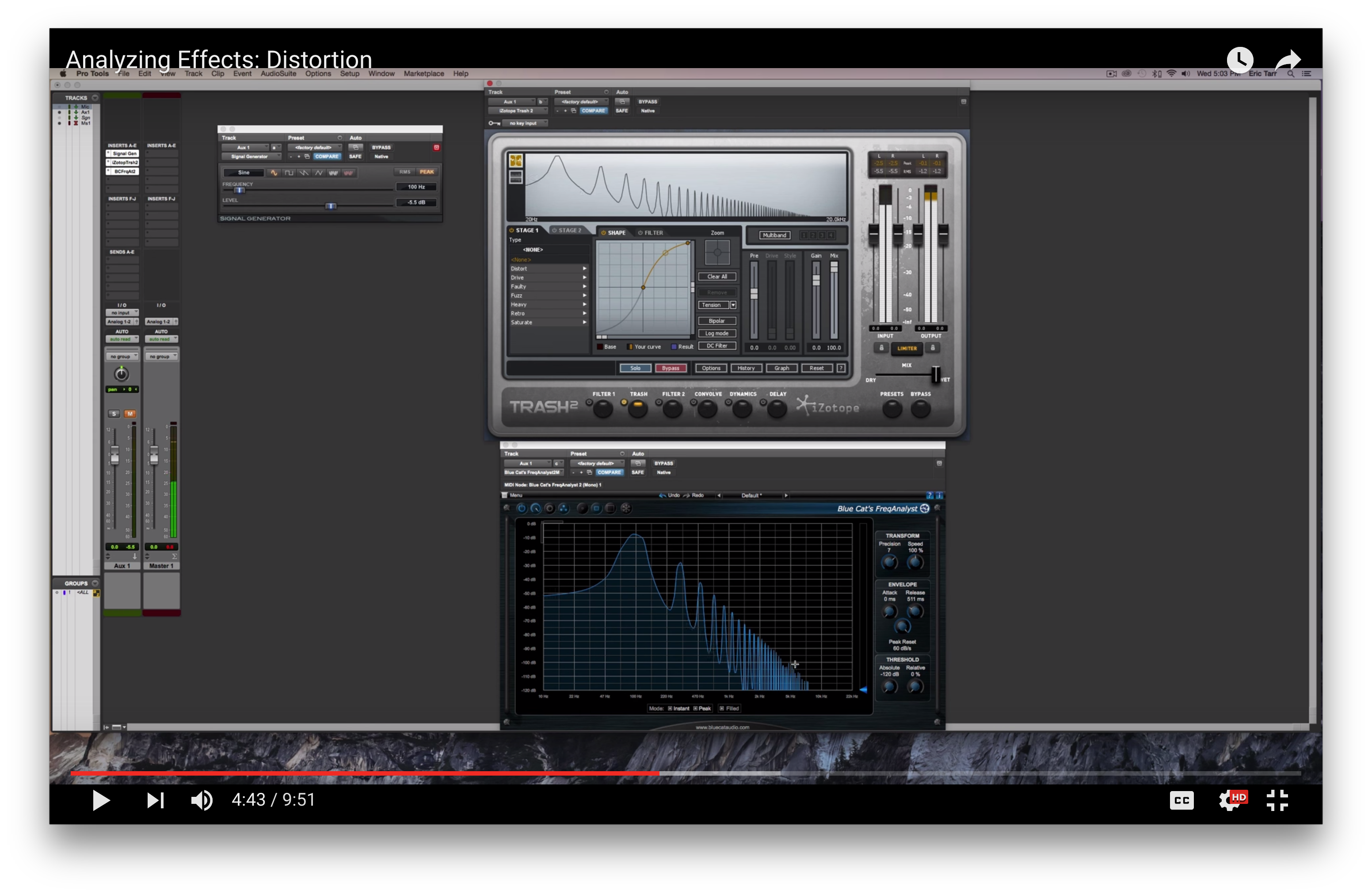Empirical Labs Arouser: Saturation Characteristics
This is the second video — a follow up video to one I made previously about the Empirical Labs Arouser plug-in.
In the first video, what I did was I focused on analyzing the compressor characteristics of this plug-in. That’s it’s primary purpose to do dynamic range compression, so what I did was I analyzed the attack and release characteristics.
You know, what are the things that give one compressor it’s sound over another one? What is part of what gives Arouser it’s sound are these kinds of controls, including this interesting one called the Attack Modification.
So in that video, what I did is I analyzed it by taking some input signal, sending it through the compressor, and I was able to look then at the attack and release characteristics. More interest than that, switch over and check out that other video too.
In this one what I’m going to do is focus more on the saturation and the soft clipping distortion characteristics of this plug-in. That’s another thing that gives it it’s sound, you know?
Empirical Labs is known for the Fatso and having distortion things built into their compressors, so let’s analyze what they’ve got going on over here inside of this software.
So what I’m going to do here, let me shrink down the size of these track so they’re not taking up too much space on the screen, and what I’m actually going to do is switch over and use, on a different track, I’m going to send a test tone through this compressor here.
So to give you an idea of how I’m going to do this, I’ve got a test tone here, a sine wave signal that I’ll send through the compressor. I’ve got the ratio turned off, so I’m just going to be working with the soft clipping going on here. Then I’m going to send this signal over here and analyze it in — let me get this setup — over here through this frequency analyzer.
Now I can look at the harmonic content that’s getting generated by this plug-in. Alright? Our first test tone signal just has one harmonic over here at 100Hz. We can see then with soft clipping and whatever else is going on what kind of harmonic distortion is generated over here.
This is an exercise that I’ve done in other videos too, so if you want to find out more and understand more about what’s really going on and what you’re seeing on the screen, what kind of harmonic content gets generated by different distortion algorithms, definitely check out those other videos.
So we’ll just jump ahead and start analyzing this one. So about 100Hz going through. We’re going to start turning up the saturation. I’ve got it muted for now, because I know that it’ll get annoying otherwise.
Nothing too fancy here.
So let’s turn up the saturation and see what happens.
So as we start to dial up some of the saturation, we’re going to see here that we’re going to start having our first harmonic come in.
So this is a harmonic that occurs at about 300Hz. So that’s an odd order harmonic. That’s what you would expect from a soft clipper. If I were to drive more input into it, it’s going to change the amount that goes above, or gets clipped here in the distortion algorithm.
So I’ve got my fundamental, I’ve got my first harmonic, which is an odd harmonic, right? We’re not really seeing harmonics show up here at the even harmonics, so that’s what you would normally expect with a soft clipper. So I start to increase the amount of clipping that occurs.
We’ll see the amplitude of that harmonic increase. We’ll also start to see one that shows up here at about 500Hz. So now we’ve got odd order harmonics, 100, 300, 500, and if I go all the way up, we’ll start to see more and more of these odd harmonics show up, all the way at the top, as you see on here, we’re getting into the range where it’s pinned or toasty, we’re looking at 14% total harmonic distortion in that range.
What did we end up with? A bunch of odd harmonics. This is getting to the point where it’s almost acting like a hard clipper. With a hard clipper, you would expect to see the odd harmonics, and then also all the way up the spectrum. 300, 500, 700, 900, 1100, all the way up.
So with this compressor, with just one knob, you very easily have the ability to add in some nice saturation, even getting to the point where it’s going to be pretty extreme.
So you know, this is just another great feature. Something that works well side-by-side with a compressor, where the compressor can do it’s own thing. You might also want to add a little bit of saturation to it.
So I like having these two tools together in one interface. It doesn’t seem like there’s anything too dramatic or different going on with this soft clipper that you might not find in other ones, but I like that this tool has these two things working together.
So definitely check out Empirical Labs website. You can download a free 15 day demo from there. Test it out, see how it sounds, see what you think of it, and hopefully in the pretty near future, they’ll start to offer it for purchase.
Until next time, take care guys.





